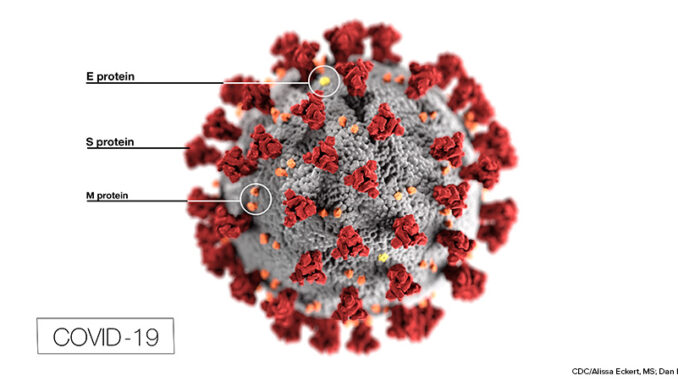
Back to School?
Whether you’re attending school remotely or in a hybrid in-person model, chances are this school year has been a different experience. It’s likely that even if you attend school in-person, your routine is different, and some events and extracurricular activities have been cancelled. You’re probably wondering when things ever will be back to “normal.”
Parents, educators, coaches, and health professionals have spent the last year debating the safety of children attending in-person schooling during the COVID pandemic. Now, the Center for Disease Control (CDC) has issued a statement saying that schools that opened in-person last fall had little impact on the spread of the virus. In fact, some of the schools studied had lower rates of infection than the rest of the community did. How is this possible?
Schools abide by the CDC’s safety precautions, such as social distancing, mandatory mask policies, widespread hand sanitizer use, testing students for the virus, and improving classroom ventilation. The one exception is indoor sports. The CDC reports that high rates of infection have occurred among students participating in sports such as wrestling, which occurs indoors and is high contact.
President Biden has said that his goal is to have the majority of schools back open within his first 100 days in office. He has included $130 billion for schools within his COVID relief plan to help pay for the costs of additional safety measures. In some school districts, teachers and staff are receiving the COVID vaccine along with other essential workers before it becomes available to the public.
What Do You Think? What has school looked like for you this year? Have you taken classes remotely, in person, or a combination? What is one example of something that you have enjoyed about school this year? Write a paragraph describing your experiences.
FBI Tracking Down Capitol Riot Suspects

Have you seen the billboards, posters, advertisements, and social media posts asking for information about the people who participated in the violent riot at the U.S. Capitol on January 6, 2021? The FBI has stated that it will do whatever it takes to track down those responsible for the incident in Washington, D.C. that caused five deaths. Investigators have opened more than four hundred subject case files, many the result of tips from the public, including people who know the suspects. More than 200,000 digital media tips have been shared. Investigators are also using search warrants and grand jury subpoenas to track down participants. So far, over 170 people have already been arrested. According to acting U.S. attorney Michael Sherwin, this investigation is bigger than anything ever undertaken by the FBI or the Department of Justice in the past.
What’s known about the suspects so far? Most of them are from outside Washington, D.C., coming from at least 39 states. (Texas and New York have the highest number of suspects.) At least fifteen of the suspects are veterans–two currently serve in the Army Reserve. Four have a history of law enforcement. Participants are mostly men, although twenty women have been arrested. The average age of the rioters is 42 years old, though suspects as young as 20 and as old as 70 have been apprehended.
Dig Deeper Most of the people who participated in the insurrection are from out of state. The most highly represented states in number of arrests so far include Texas (18), New York (14), Florida (13), California (11), New Jersey (9), and Virginia (8). Make a circle or bar graph illustrating this information.
Biden’s LGBTQ Policies
President Joe Biden has wasted no time reversing many Trump-era policies that discriminated against the LGBTQ community. Just one day after taking office, the online form to contact the White House was updated to include the following pronoun choices: “he/him,” “she/her,” “they/them,” or “prefer not to share.” Similarly, the prefixes “Mr,” “Mrs,” “Ms,” and the gender-neutral “Mx” are now all given as options on the form. Allowing people to select their own pronoun and prefix helps people be more included, as it shows respect for their preferred gender identity.
Also, on the first day of his presidency, Biden signed an executive order upholding the Supreme Court’s June 2020 ruling that prohibits workplace discrimination on the basis of sexual orientation and/or gender identity. A few days later, he reversed Trump’s ban on transgender Americans serving in the military. As of 2019, there were 8,980 active-duty transgender troops in the U.S. armed forces. Under the Trump ban, transgender military personnel who were already serving could continue to do so, but no new recruits were allowed in. That policy has now been reversed.
Biden’s early cabinet choices have also shown his support for the LGBTQ community. His nominee for the position of transportation secretary, Pete Buttigieg was confirmed this week by the Senate. This makes Buttigieg the first openly gay cabinet member in U.S. history. Dr. Rachel Levine has also been nominated to serve as assistant secretary of the Health and Human Services department. If confirmed, she would be the highest ranking transgender Executive branch official.
Dig Deeper Visit the White House website at www.whitehouse.gov. What information are you able to find about the current administration’s approach toward the LGBTQ community?
Chinese Miners Rescued
Can you imagine being trapped underground for two weeks? That’s what happened to a group of 22 workers in a gold mine in China’s Shandong province. They were about two thousand feet beneath the Earth’s surface when an explosion damaged the mine, blocking the exits and cutting off communication. They had no food, but they did have access to water. (The water in the mine, however, was not suitable for drinking, so the trapped workers tried to limit their intake.)
Luckily, they were saved by their own quick thinking: each day, one of them would knock on a drill pipe that led up from the mine shaft to the surface. Eventually, rescuers heard the knocks and knew there were survivors underground. The rescuers then drilled a long, thin hole into the mine and sent down food, medicine, paper, and pencils. The trapped miners received the items and sent a note back up. For days, communication continued this way, with the miners receiving porridge, nutritional liquids, and even a traditional meal of sausages to sustain them.
The rescue effort was sped up unexpectedly when a blockage fell to the bottom of the mine shaft. Some of the miners were too weak to stand when they made it back to the surface and all wore blindfolds to protect their eyes after two weeks of living in darkness. Unfortunately, ten of the trapped miners didn’t survive the accident, and one is still missing.
